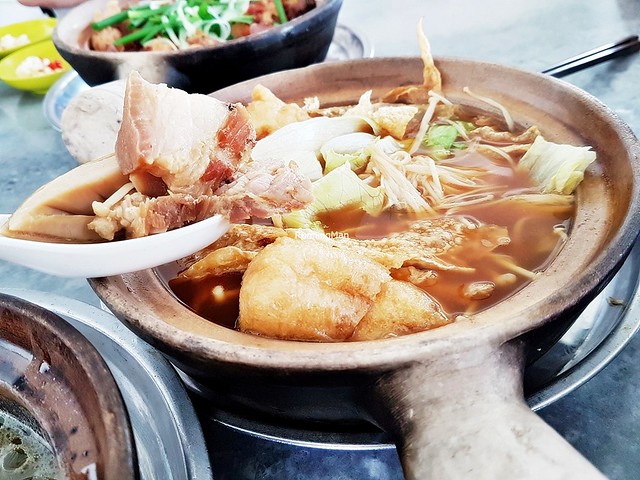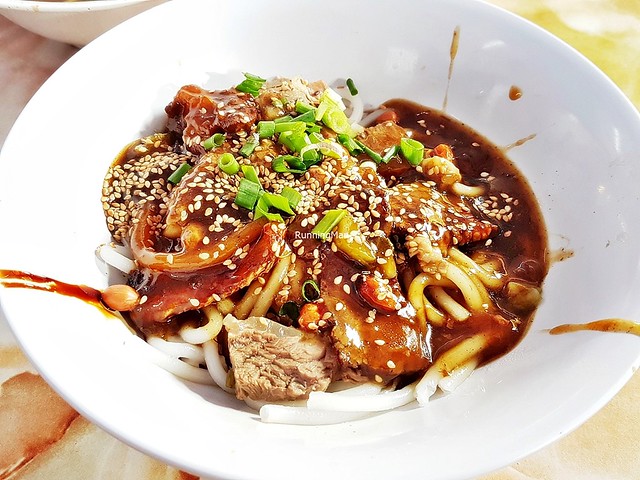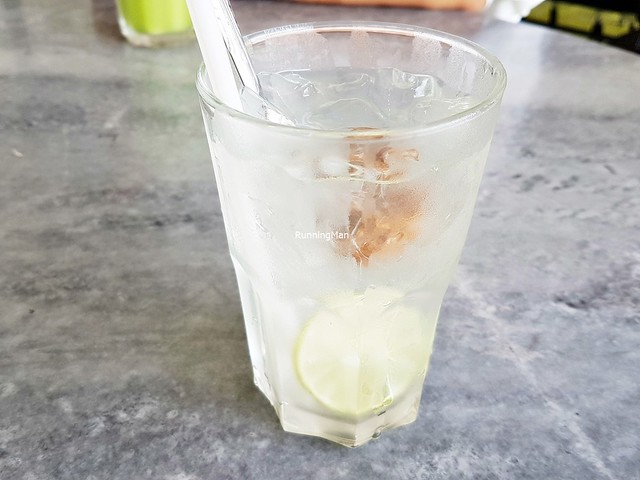Seremban Street Food
Seremban Street Food is part of the larger cuisine of Negeri Sembilan, Malaysia, and while it shares much of it with the rest of the country, it has several distinct dishes which set it apart. The Minangkabau / Minang community is strongly represented here, and the city is seen as the cultural heart of this ethnic group. Besides Minangkabau / Minang cuisine, there are also sufficient representations of Chinese, Indian, Malay, Indonesian, and American cuisines here.
 |
| Yellow Wine Chicken |
Food in Seremban is typically found along the streets in pushcarts or small cafes. There are few mid-range restaurants or fine-dining establishments. Malaysian cuisine is largely based around white rice, noodles, and spices, and there is a lot of cross / fusion influences across cultures. Common ingredients used here include coconut, lemongrass, pandan / screwpine leaf, turmeric, white rice, rice noodles, eggs, anchovy, shrimp / prawn, fish, crab, squid, bean sprouts, eggplant / aubergine, cabbage, cucumber, yardlong beans, coriander, ginger, okra / lady's finger, kang kong / water spinach, Chinese cabbage / bok choy, beef, mutton, chicken, pork, banana, calamansi lime, durian, mango, pineapple, rambutan, soursop, starfruit, peanuts, and chili.
Meals in Seremban are typically one-dish affairs, though communal dining and sharing of dishes is also common. Typically, most tourists seem to prefer day-trips to Seremban, as you can easily cover most of the sights, sounds, and tastes of the city fairly quickly, particularly if you're focused on items unique to the area.
.....
The Claypot Chicken Rice here is usually eaten as part of a meal, rather than a meal on its own. Otherwise, it's similar to other versions elsewhere, made with white rice, dark soy sauce, bok choy / Chinese cabbage, diced bone-in chicken chunks, lup cheong / dried Chinese sausage, salted fourfinger threadfin fish, shiitake mushrooms, and spring onions. Cooked in a claypot, the ingredients are mixed together before eating. Has fluffy crunchy tender chewy textures, with bold savoury salty sweet flavour. Part of the white rice sticks to the sides of the hot claypot, blackening and turning crisp; some claim this is the best part of the dish.
 |
| Claypot Chicken Rice |
 |
| Claypot Chicken Rice |
The Bak Kut Teh from Seremban, Negeri Sembilan, Malaysia, differs from the deeply savoury herbal Kuala Lumpur version, and the delicate herbal sweet savoury Johor Bahru version. Here, the soup / broth is lightly herbal and rather thin, less tasty than its counterparts. Ingredients include tender pork ribs with meat that comes easily off the bone, chewy pig's stomach, succulent pork belly, soft cabbage, wispy golden mushrooms, crunchy dried beancurd sheets, and spongy tofu puffs. Usually served with a thick dark soy sauce, fluffy white rice, and chopped red chili.
 |
| Bak Kut Teh |
 |
| Bak Kut Teh |
The signature dry Beef Noodles of the area. This is the Chinese Cantonese style of beef noodles, which differs from the more common Teochew and Hainanese versions. Also known as Ngau Lam Fun, this consists of chewy long cylindrical tapioca noodles, garnished with tender braised beef brisket, juicy salted mustard greens, chewy braised beef stomach tripe, gelatinous beef tendon, crunchy roasted peanuts, sesame seeds, and spring onions, all coated in a thick gloopy rich beef stock braising gravy, that is bold with savoury salty meaty flavour. The beef braising gravy itself is made with beef stock, water, dark soy sauce, sugar, garlic, tapioca flour, oyster sauce, 5-spice powder, white pepper, and sesame oil. Yum.
 |
| Beef Noodles |
 |
| Beef Noodles |
The Mixed Beef Soup is simply the wet version, but without noodles and gravy. The beef stock is made with similar ingredients, and lends the clear beef soup / broth a bold meaty savoury sweet flavour. Garnished with tender braised beef brisket, bouncy beef meat balls, chewy braised beef stomach tripe, gelatinous beef tendon, soft daikon radish slices, and spring onions. Hearty and fortifying, very nice on cold days.
 |
| Mixed Beef Soup |
 |
| Mixed Beef Soup |
The Coconut Tart features a buttery crumbly pastry tart shell, filled with grated coconut shreds infused with pandan / screwpine leaf juice. This gives it a grainy chewy texture, with a lovely floral earthy sweet flavour. Decorated with a juicy chunk of candied cherry for a fruity sweet note.
 |
| Coconut Tart |
 |
| Coconut Tart |
Expected more from the Mee Hoon Sotong. This plate features long thin rice vermicelli noodles, topped with tender braised pork loin slices, crunchy kai-lan / Chinese kale / Chinese broccoli, and bouncy cuttlefish parts. A savoury salty meaty gravy is poured over. This was underwhelming because I'd hoped the cuttlefish played a bigger role.
 |
| Mee Hoon Sotong |
 |
| Mee Hoon Sotong |
The Kopi / Coffee from Seremban, Negeri Sembilan, Malaysia, has a medium, balanced body, with decent strength, and a mellow aroma.
 |
| Kopi / Coffee |
Served chilled, the Lime & Sour Plum Juice is refreshing with its zesty tangy sour sweet flavour. Great thirst quencher on warm days.
 |
| Lime & Sour Plum Juice |
The chilled Watermelon Juice is made from freshly blended watermelon, and has a lovely fruity sweet flavour.
 |
| Watermelon Juice |
The Seremban Siew Pau is a crisp, flaky, buttery pastry shaped like a bun, whose hollow center is filled with a piping hot, juicy savoury sweet salty meat filling. There are 2 versions, the more popular Seremban Siew Pau Pork with tender minced pork meat; and the Seremban Siew Pau Chicken with chewy shredded chicken meat. Originating from Seremban, Negeri Sembilan, Malaysia, today, there are 3 big brand name producers of this delicious treat - Empayar 芙蓉烧包 (the original), Siew Pow Master (my preference), and Kee Mei Siew Pau; all hailing from the same family that invented it.
 |
| Seremban Siew Pau |
 |
| Seremban Siew Pau Pork |
 |
| Seremban Siew Pau Chicken |
 |
| Seremban Siew Pau |
The Chinese Hakka dish of Yellow Wine Chicken is rather uncommon, and differs from the more common Red Wine Chicken. This is made with chunks of boneless chicken, Chinese Huangjiu yellow rice wine, ginger, salt, light soy sauce, spring onions, white pepper, and sesame oil. It has a bright, refreshing, boozy herbal earthy sweet flavour, with contrasting textures from the crunchy spring onions, tender chicken, and smooth soup / broth. Soulful and uplifting on the palate.
 |
| Yellow Wine Chicken |
 |
| Yellow Wine Chicken |
.....


CONVERSATION